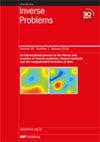CUQIpy: II. Computational uncertainty quantification for PDE-based inverse problems in Python
IF 2
2区 数学
Q1 MATHEMATICS, APPLIED
引用次数: 0
Abstract
Inverse problems, particularly those governed by Partial Differential Equations (PDEs), are prevalent in various scientific and engineering applications, and uncertainty quantification (UQ) of solutions to these problems is essential for informed decision-making. This second part of a two-paper series builds upon the foundation set by the first part, which introducedCUQIpy:II.用 Python 对基于 PDE 的逆问题进行计算不确定性量化
逆问题,尤其是由偏微分方程(PDE)控制的逆问题,在各种科学和工程应用中十分普遍,而这些问题的解决方案的不确定性量化(UQ)对于明智决策至关重要。本文是两篇系列论文的第二部分,建立在第一部分所奠定的基础之上。第一部分介绍了 CUQIpy,这是一个使用贝叶斯框架计算逆问题不确定性量化的 Python 软件包。在本文中,我们通过一个通用框架扩展了 CUQIpy 的功能,使其能够解决基于 PDE 的贝叶斯逆问题,该框架允许在 CUQIpy 中集成 PDE,无论是本机表达还是使用第三方库(如 FEniCS)表达。CUQIpy 提供与数学表达式密切匹配的简洁语法,简化了建模过程并增强了用户体验。CUQIpy 在基于 PDE 的贝叶斯逆问题上的多功能性和适用性在抛物线、椭圆和双曲 PDE 的示例中得到了证明。其中包括涉及热方程和泊松方程的问题,以及电阻抗层析成像和光声学层析成像的应用案例研究,展示了该软件的效率、一致性和直观界面。这种基于 PDE 逆问题的 UQ 综合方法为非专业人员提供了易用性,为专家提供了高级功能。
本文章由计算机程序翻译,如有差异,请以英文原文为准。
求助全文
约1分钟内获得全文
求助全文
来源期刊

Inverse Problems
数学-物理:数学物理
CiteScore
4.40
自引率
14.30%
发文量
115
审稿时长
2.3 months
期刊介绍:
An interdisciplinary journal combining mathematical and experimental papers on inverse problems with theoretical, numerical and practical approaches to their solution.
As well as applied mathematicians, physical scientists and engineers, the readership includes those working in geophysics, radar, optics, biology, acoustics, communication theory, signal processing and imaging, among others.
The emphasis is on publishing original contributions to methods of solving mathematical, physical and applied problems. To be publishable in this journal, papers must meet the highest standards of scientific quality, contain significant and original new science and should present substantial advancement in the field. Due to the broad scope of the journal, we require that authors provide sufficient introductory material to appeal to the wide readership and that articles which are not explicitly applied include a discussion of possible applications.
 求助内容:
求助内容: 应助结果提醒方式:
应助结果提醒方式:


